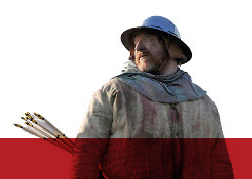The Erpingham Gate, Norwich
By Stephen Cooper Sir Thomas Erpingham lies buried in the cathedral at Norwich, where he also paid for the building of the Erpingham Gate, the rebuilding of the church of the Dominican Friars and a new East window for the church of the Augustinian Friars. Erpingham was a seasoned veteran when he participated in the Agincourt campaign. Born in 1357, he had served Henry V’s father (Henry ‘Bolingbroke’) and grandfather (John of Gaunt). He had been a soldier in France and Spain, crusaded in Prussia, made a pilgrimage to the... Read More
